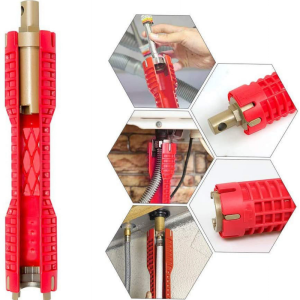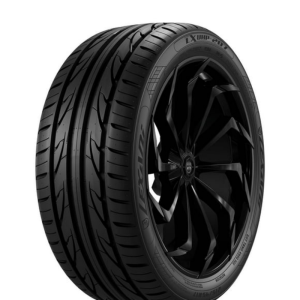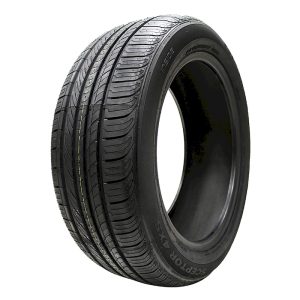
The Basics of Tire Rotation
What is Tire Rotation?
How often do tires need to be rotated? Tire rotation involves moving tires from one position to another on your vehicle. This process helps even out tire wear. During tire rotation, tires may move from front to back or side to side. This ensures all tires handle equal parts of the vehicle’s load over time.
Reasons for Tire Rotation
Tire rotation is crucial for several reasons. Firstly, it promotes uniform tire wear. This extends the life of your tires, saving you money in the long run. Secondly, it helps maintain balanced handling and traction. This enhances safety on the road. Additionally, consistent tire rotation can prevent vibrations and improve fuel efficiency. Rotating your tires regularly ensures you get the most out of them.
Signs That Your Tires Need Rotation
Knowing when to rotate your tires is crucial for vehicle maintenance. Regular tire rotations help manage uniform wear and tear. This practice extends the tire’s lifespan and enhances your vehicle’s performance. However, recognizing the right time for rotation often depends on understanding tire wear patterns.

Understanding Tire Wear Patterns
Tire wear patterns provide essential clues about the need for rotation. Uneven wear usually signals it is time to rotate your tires. For example, if your front tires show more wear than the rear ones, it suggests a rotation is due. This is especially true for front-wheel-drive vehicles, where the front tires handle more load and wear out faster.
Look for any signs of irregular tread wear. This could mean bald spots or uneven depth across the tire surface. Such patterns often result due to sustained driving on misaligned wheels or imbalanced tires. Recognizing these signs early can prevent further tire damage and ensure safe driving. Always consult the vehicle’s owner’s manual or a professional mechanic if unsure about wear patterns or rotation needs.
Optimal Tire Rotation Schedules
Factors Influencing Rotation Frequency
How often do tires need to be rotated? Tire rotation frequency can depend on various factors. Your driving patterns play a key role. For example, frequent city driving with stops and turns causes quicker wear. Also, the type of roads you travel on affects tire life. Driving on rough, uneven surfaces like gravel can speed up wear. Vehicle weight is another factor. Heavier cars put more strain on tires, leading to faster wear. Don’t forget, different car models have unique needs. Some may need rotation sooner than others due to their design.
Your tire’s design determines their rotation pattern. Tires with symmetrical tread patterns can move to any position. Those with directional treads must stay on the same side of the car. Check your tire type to know how to rotate them correctly. Always remember to check tire wear signs too. If you spot uneven wear sooner than expected, it may be time for a rotation.

Vehicle Manufacturer’s Recommendations
Vehicle manufacturers give specific advice for tire rotations. You can find this information in the car’s owner’s manual. It tells you how often to rotate your tires. This is usually between 6,000 to 8,000 miles (approximately 9,600 to 13,000 km). Some cars may vary, so it’s important to check.
Manufacturers know their vehicles best. They consider factors like the drive system, tire type, and weight distribution. That’s why following their recommendations is wise for optimal tire life.
Check your manual for the right rotation pattern for your car. It may suggest different patterns for front-wheel drive, rear-wheel drive, or all-wheel drive. These instructions help you get the most from your tires. Stick to these guidelines to ensure even wear and extended tire life.
The Impact of Driving Habits on Tire Wear
Urban vs. Highway Driving Considerations
How often do tires need to be rotated? Different driving environments can lead to uneven tire wear. City driving, with frequent stops and sharp turns, causes the front tires to work harder. This results in quicker wear, especially on front-wheel-drive vehicles. In contrast, highway driving involves less stopping and smoother turns. Thus, tires tend to wear more evenly over longer distances. However, high-speed driving can also lead to heat buildup, which may accelerate wear on all tires. To reduce uneven wear, drivers should consider tire rotation every 6,000 to 8,000 miles.
The Impact of Terrain on Tire Longevity
Tires can degrade faster when driven on rough terrains such as gravel or off-road paths. These surfaces can cause cuts, punctures, and higher friction, leading to irregular and accelerated tire wear. For those often driving on challenging terrains, more frequent tire checks are necessary. Ensure tire rotation takes place more often to prevent rapid wear and tear. Pay close attention to any unusual tread wear patterns and adjust your tire rotation schedule accordingly. Regular rotation will help maintain tire longevity, even on tough roads.

Methods of Tire Rotation
Tire Rotation Patterns and Techniques
How often do tires need to be rotated? Tire rotation is vital for even tire wear and prolonged life. Patterns of rotation are set by tire type and vehicle drive systems. For example, front-wheel-drive cars may follow a forward cross pattern. This means front tires move to the opposite sides of the rear, and rear tires move straight forward. Rear-wheel drives use a rearward cross pattern, the opposite of front-wheel drives.
On all-wheel or four-wheel drive vehicles, an ‘X-pattern’ is common. Here tires move from one axle to the opposite sides of the other. However, if your tires are non-directional, a side-to-side swap may be enough.
For the best results, rotate tires as per your vehicle owner’s manual. This document provides the ideal pattern specific to your car model. Always mark your tires before rotation to track their positions.
Directional vs. Symmetrical Tires
How often do tires need to be rotated? When rotating tires, we must consider their tread patterns. Directional tires have a ‘one-way’ tread meant for a single driving direction. These tires have arrows on the sidewall pointing the rotation direction. Swap them front to back on the same side.
Symmetrical tires, on the other hand, have uniform treads without a specific direction. They can rotate to any position on the vehicle. Whether they go front to back or across depends on your vehicle and tire wear.

Always ensure you rotate directional tires correctly to maintain their designed performance. For symmetrical tires, follow your owner’s manual or a trusted mechanic’s advice for optimal rotation.
By rotating your tires regularly, you guarantee even wear across all four. This maintenance step is a must-do for safe driving and cost savings over time.
Additional Tire Maintenance Tips
Beyond regular tire rotation, there are other maintenance procedures critical to tire safety and longevity.
Importance of Wheel Alignment
Wheel alignment plays a crucial part in tire preservation. Misaligned wheels can lead to uneven tire wear. Over time, this can cause handling issues and even reduce fuel efficiency. You should have your wheel alignment checked if you notice your car pulling to one side or after you hit a curb or pothole. Staying aligned ensures your tires meet the road at the proper angle, distributing weight evenly and reducing wear.
Checking and Adjusting Tire Pressure
Tire pressure affects how your vehicle handles and the life of your tires. Under-inflated tires can overheat, leading to premature wear and potential blowouts. Over-inflated tires are more likely to suffer damage from road debris. Check your tire pressure monthly and prior to long trips. You’ll find the recommended pressure in your vehicle’s manual or on a sticker inside the driver’s door. Adjust your tire pressure as needed to match these recommendations. This simple check can extend your tire life and improve your car’s performance.

Safety and Performance Benefits
How often do tires need to be rotated? Tire rotation is not just about extending tire life. It helps keep your car safe and performing well. By rotating tires, you ensure that all four have similar grip levels. This balance is key for stable handling and control. When tires wear evenly, your braking, cornering, and acceleration improve. These benefits make routine tire rotation a smart choice for any driver.
Improving Vehicle Handling and Control
Even tire wear is important for safe driving. With it, you get better grip and handling. This leads to easier control, especially in bad weather or emergency situations. Proper tire placement can also help with vehicle stability. So, make sure to rotate your tires as part of your regular car care routine.
Extending the Life of Your Tires
Regular tire rotations can make your tires last longer. This practice prevents uneven wear patterns. As a result, you won’t have to buy new tires as often. This saves you money and time. It’s an easy way to care for your car and ensure it stays roadworthy for years to come.




